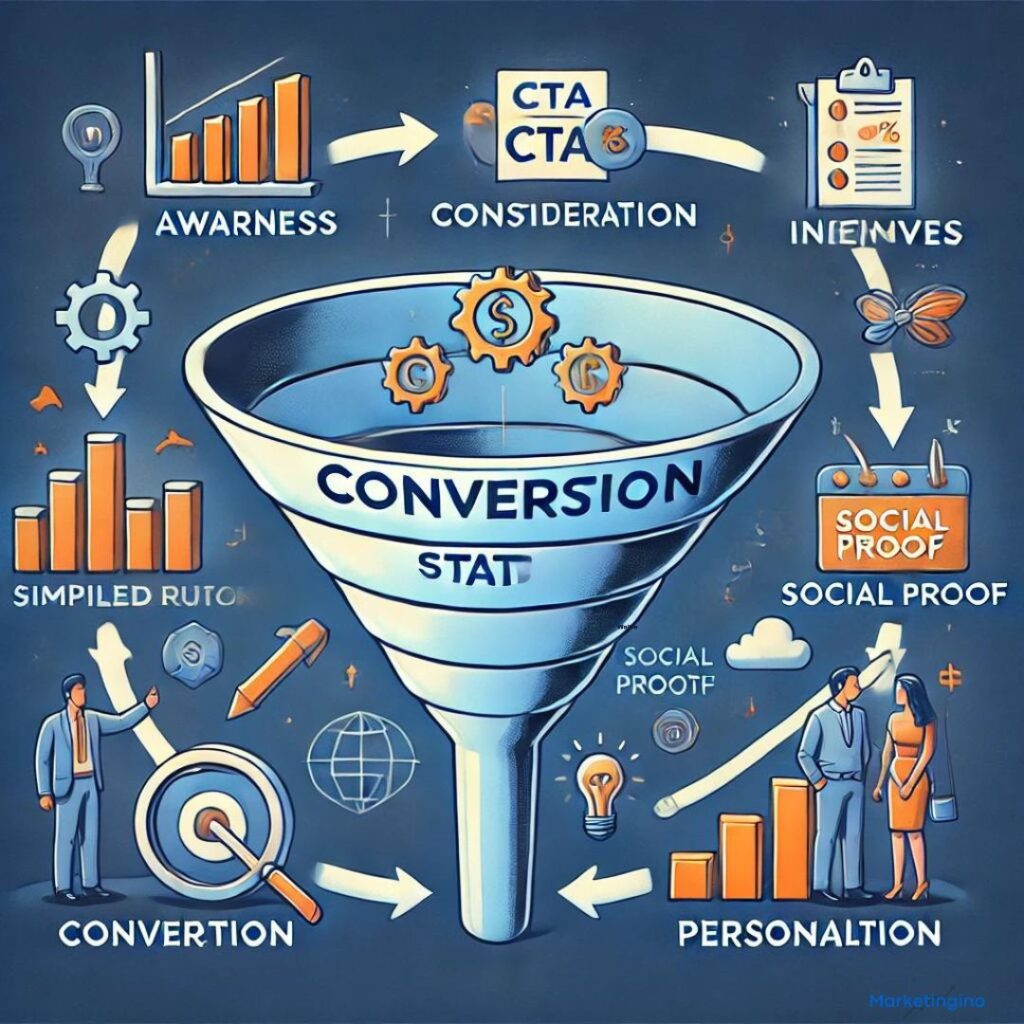In the world of digital marketing, the journey of turning potential customers into actual customers is often visualized as a funnel. This funnel consists of several stages, each playing a critical role in guiding prospects towards making a purchase or taking a desired action. One of the most crucial stages in this funnel is the conversion stage. This is the third stage of the marketing funnel, where marketers capitalize on the interest people have already shown. In this article, we will explore the conversion stage, its importance, strategies to optimize it, and how it fits into the overall marketing funnel.
Understanding the Conversion Stage
The conversion stage occurs after the awareness and consideration stages in the marketing funnel. By this point, potential customers are already aware of your brand and have shown interest in your products or services. The primary goal of the conversion stage is to transform this interest into a tangible action, such as making a purchase, signing up for a service, or completing a form.
Importance of the Conversion Stage
1. Turning Interest into Action
The conversion stage is where the efforts of previous stages pay off. It is the point at which interested prospects are persuaded to take the final step, transitioning from potential leads to actual customers.
2. Measuring Marketing Effectiveness
Success at the conversion stage is a key indicator of the effectiveness of your marketing strategies. High conversion rates demonstrate that your campaigns are not only attracting interest but also driving users to complete desired actions.
3. Revenue Generation
Conversions directly impact a company’s revenue. By optimizing this stage, businesses can maximize their income from the traffic and leads generated through earlier stages of the funnel.
Strategies for Optimizing the Conversion Stage
1. Provide Clear and Compelling CTAs
Calls to action (CTAs) are vital at this stage. Ensure that your CTAs are clear, compelling, and prominently displayed. They should communicate the value and urgency of taking the desired action. For example, “Buy Now,” “Get Started Today,” or “Sign Up for Free.”
2. Offer Incentives
Incentives such as discounts, free trials, or exclusive offers can motivate prospects to convert. Highlight these incentives to add an extra push towards taking the desired action.
3. Simplify the Process
A complicated or lengthy conversion process can deter potential customers. Simplify forms, reduce the number of steps required, and ensure that the process is user-friendly and intuitive. The easier it is to convert, the more likely users will follow through.
4. Use Social Proof
Social proof, such as customer testimonials, reviews, and case studies, can build trust and credibility. Displaying positive feedback from satisfied customers can reassure prospects and encourage them to take the next step.
5. Personalize the Experience
Personalization can significantly enhance the conversion stage. Use data and insights to tailor the user experience, providing relevant content, recommendations, and offers that resonate with individual prospects.
6. Address Objections
Identify common objections or concerns that prospects may have and address them proactively. Providing clear information, FAQs, and responsive customer support can help alleviate doubts and facilitate conversions.
How the Conversion Stage Fits into the Marketing Funnel
1. Awareness Stage
At the top of the funnel, the awareness stage focuses on attracting attention and creating awareness about your brand. This is achieved through various marketing efforts such as advertising, content marketing, and social media engagement.
2. Consideration Stage
The consideration stage is where potential customers evaluate your offerings. They compare your products or services with competitors, seek more information, and consider whether your solution meets their needs. This stage involves nurturing leads through targeted content, email marketing, and engaging with prospects to build interest.
3. Conversion Stage
The conversion stage is the third stage, where you capitalize on the interest generated in the previous stages. The goal is to persuade prospects to take a specific action that aligns with your business objectives, such as making a purchase or filling out a lead form.
4. Post-Conversion Stage
After conversion, the focus shifts to retaining customers and encouraging repeat business. This involves delivering excellent customer service, engaging customers through loyalty programs, and continually providing value to foster long-term relationships.
The conversion stage is a pivotal point in the marketing funnel where interest is transformed into action. By optimizing this stage, businesses can effectively turn prospects into customers, driving revenue and measuring the success of their marketing efforts. Clear CTAs, incentives, a simplified process, social proof, personalization, and addressing objections are all key strategies to enhance conversions. Understanding and capitalizing on the conversion stage is essential for achieving business growth and success.




